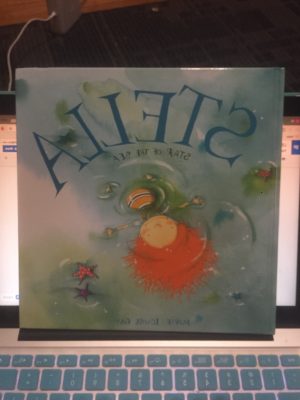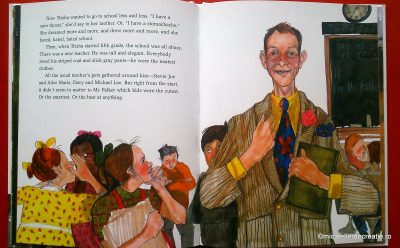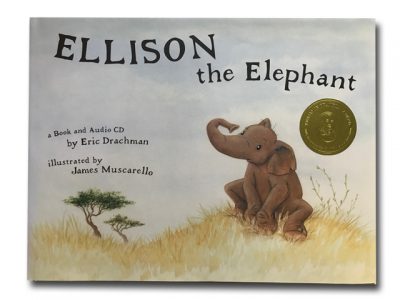
Title: “Ellison the Elephant”
Author: Eric Drachman
Illustrator: James Muscarello
Publisher and Year: Kidwick Books LLC 2004
Number of Pages: 30
Tags: Friendship, Identity, Bullying, 2-3, 4-5, Fiction, Stephanie Rudi
Genres: Fiction
Analysis: Ellison is an elephant who is different from the other elephants because he can’t make the same sounds with his trunk that they do. He gets bullied by the others and is often isolated. One day he accidentally bumps into a weasel who somehow pushes Ellison to make the sounds that the other elephants do. In the end, he fits in with the other elephants and is the envy of all because of his sounds.
This book is possibly a mirror for some readers that may feel different from their peers in one way or another. Perceptually, we see Ellison struggle to fit in with the rest of society, but with the help of a friend, he eventually gains the ability to fit in and stand out. In a structural sense, Ellison is a social outcast which is shown by his being bullied, and in the end he is highly respected because of his abilities.
Ideologically, this story is probably not the best message for children because it’s saying that if you are oppressed because of a physical difference, you should try and conform to fit in with the society that oppressed you. This is not the best message because it doesn’t highlight the importance of self acceptance whatsoever. His mother barely touches on it, but in the end she just tells him to have thick skin and get over it, which is what he could have done but the plot didn’t move in that direction, which was a little bit of a let down.
The picture book codes show Ellison as being very small compared to the other elephants, but not proportionally. He is usually facing the right which means he is less secure. The book was a cute read about friends encouraging other friends, but the ideologies that may have been unintentionally displayed do not promote being happy with yourself which is somewhat problematic.


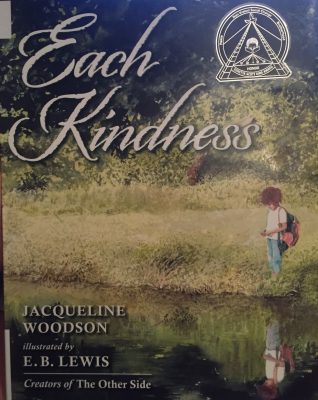 young girl named Chloe. Chloe gets a new girl, Maya, in her class but she looks different from the rest of the class. Her clothes are worn out, her hair is dirty, and she eats weird food at lunch. Chloe and the rest of her classmates do not talk to Maya or include her in any games at recess. One day, Maya is gone from school and Chloe’s teacher decides to give a lesson on kindness. She has her students drop stones into a big bucket and say one kind thing that they have done in the past week. The students watch the ripple of their stone in the water and see what an impact their little act of kindness can make. Chloe is unable to think of a kind thing she has done so she passes her stone to someone else. She becomes very guilty, thinking about Maya, and really hopes she comes back to school tomorrow so she can start including her. But, Maya went to a different school now and Chloe is left thinking of the many ways she could have been kind to her.
young girl named Chloe. Chloe gets a new girl, Maya, in her class but she looks different from the rest of the class. Her clothes are worn out, her hair is dirty, and she eats weird food at lunch. Chloe and the rest of her classmates do not talk to Maya or include her in any games at recess. One day, Maya is gone from school and Chloe’s teacher decides to give a lesson on kindness. She has her students drop stones into a big bucket and say one kind thing that they have done in the past week. The students watch the ripple of their stone in the water and see what an impact their little act of kindness can make. Chloe is unable to think of a kind thing she has done so she passes her stone to someone else. She becomes very guilty, thinking about Maya, and really hopes she comes back to school tomorrow so she can start including her. But, Maya went to a different school now and Chloe is left thinking of the many ways she could have been kind to her.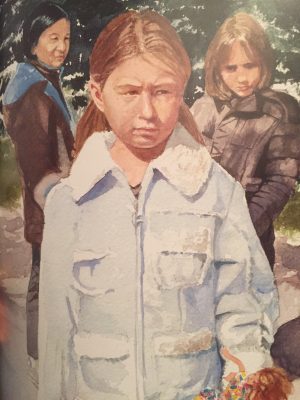 created using water colors and the colors used are very light and soft across the page with no dark outlines. Even though the plot of the story is upsetting, the illustrations appear to make it not as heavy of a story line. Maya is often facing the reader while her classmates have her back to the reader and are all on the opposite side of the page as Maya. This really highlights the isolation that Maya feels while at school. Chloe is typically the focal point of the page being drawn larger than her classmates and in the center of the page, indicating the power she holds over her classmates.
created using water colors and the colors used are very light and soft across the page with no dark outlines. Even though the plot of the story is upsetting, the illustrations appear to make it not as heavy of a story line. Maya is often facing the reader while her classmates have her back to the reader and are all on the opposite side of the page as Maya. This really highlights the isolation that Maya feels while at school. Chloe is typically the focal point of the page being drawn larger than her classmates and in the center of the page, indicating the power she holds over her classmates.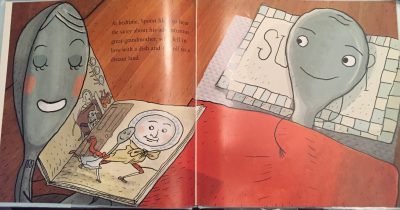
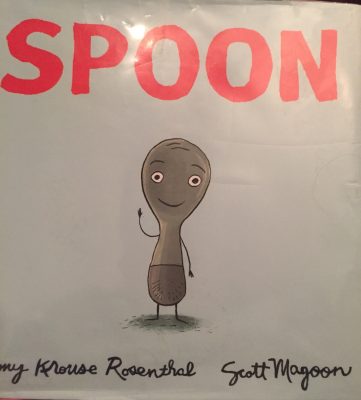 teach them to appreciate what makes them unique. The illustrations appear to be drawn with colored pencils as well as painted with acrylics. Everything drawn appears to have a thicker black outline which really makes the food and the utensils pop off the page. The images are structured in a way that makes the little spoon appear much smaller than the other utensils pictured throughout the majority of the story. It is not until he accepts himself that he is pictured close up and appears to be one of the biggest things on the page possibly signifying a shift in power. The little spoon is also mostly pictured on the right side of the page which signifies that he is a less secure character and he is moving forward in the story. This is accurate in the sense that he is very unsure of himself and he is moving from utensil to utensil to show his mom all of the things they can do that he is unable to do. The ideational framework of the characters portrays the mother as a very soft and warm character. She is the only character that has pink blushed cheeks and she is always right next to the little spoon.
teach them to appreciate what makes them unique. The illustrations appear to be drawn with colored pencils as well as painted with acrylics. Everything drawn appears to have a thicker black outline which really makes the food and the utensils pop off the page. The images are structured in a way that makes the little spoon appear much smaller than the other utensils pictured throughout the majority of the story. It is not until he accepts himself that he is pictured close up and appears to be one of the biggest things on the page possibly signifying a shift in power. The little spoon is also mostly pictured on the right side of the page which signifies that he is a less secure character and he is moving forward in the story. This is accurate in the sense that he is very unsure of himself and he is moving from utensil to utensil to show his mom all of the things they can do that he is unable to do. The ideational framework of the characters portrays the mother as a very soft and warm character. She is the only character that has pink blushed cheeks and she is always right next to the little spoon.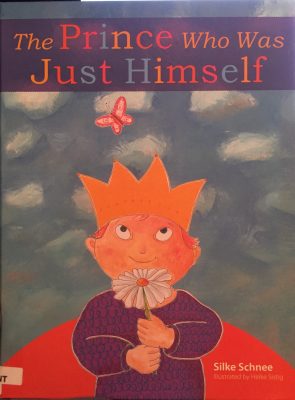 ut he ends up saving the day when he shows love and compassion towards the Evil Knight turning him kind and warm-hearted.
ut he ends up saving the day when he shows love and compassion towards the Evil Knight turning him kind and warm-hearted.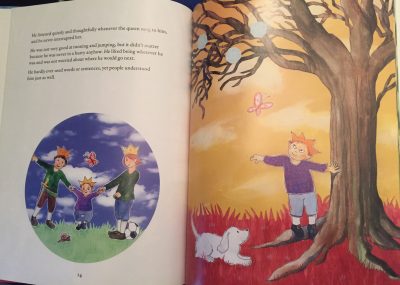 around someone with Down syndrome. It can show them that even though they may look different and be able to do different things, they are still thoughtful and in depth people. This book can also act as a mirror for someone who is disabled or is related to someone who is disabled. I also think that this book can act as a door because it shows how negatively people were treating the Prince for being different and now, having this understanding of Down syndrome, they can be kind and stick up for the people around them.
around someone with Down syndrome. It can show them that even though they may look different and be able to do different things, they are still thoughtful and in depth people. This book can also act as a mirror for someone who is disabled or is related to someone who is disabled. I also think that this book can act as a door because it shows how negatively people were treating the Prince for being different and now, having this understanding of Down syndrome, they can be kind and stick up for the people around them.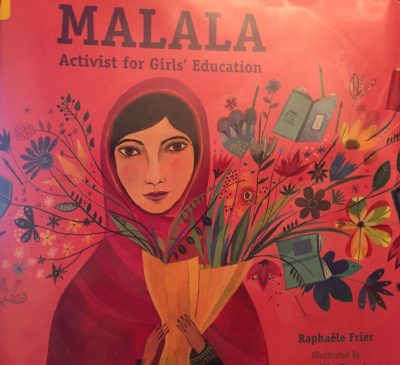
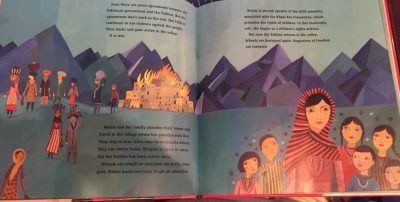
 the plantation’s properties were being sold. The author of this book found the document that had short descriptions of each of the slaves as well as how much they were being sold for. The book is compiled of poems written by Ashley Bryan from the perspective of the slaves. The poems shed light on the thoughts and experiences of the slaves and bring out the multi-faceted human during an inhumane time in history.
the plantation’s properties were being sold. The author of this book found the document that had short descriptions of each of the slaves as well as how much they were being sold for. The book is compiled of poems written by Ashley Bryan from the perspective of the slaves. The poems shed light on the thoughts and experiences of the slaves and bring out the multi-faceted human during an inhumane time in history. e to see how these dreams were stripped from them and how they were viewed more as property than as human beings. The buyers and sellers of these slaves are never pictured in the story but the fear and hopelessness that many of the poems encompass portray the powerlessness of the people enslaved and the ultimate power of the slave owners.
e to see how these dreams were stripped from them and how they were viewed more as property than as human beings. The buyers and sellers of these slaves are never pictured in the story but the fear and hopelessness that many of the poems encompass portray the powerlessness of the people enslaved and the ultimate power of the slave owners.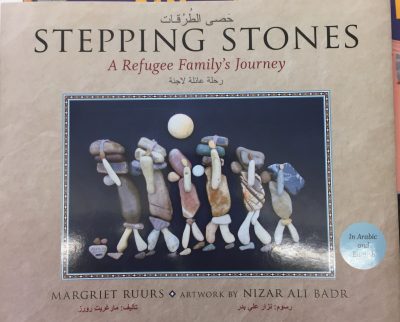
 surrounding them. This can signify the true powerlessness of refugees and the power that war has over human life.
surrounding them. This can signify the true powerlessness of refugees and the power that war has over human life.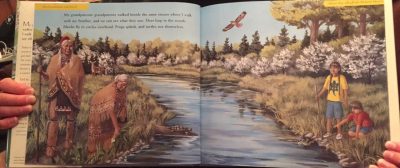
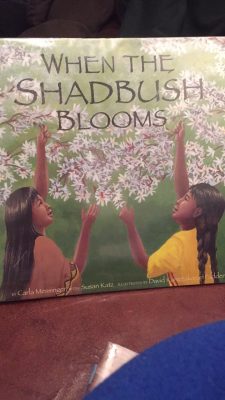 some ways, this book could potentially act as a door for children to combat any racism towards Native Americans now that they have this better understanding of the culture and it really does not seem that different from the life of any other people.
some ways, this book could potentially act as a door for children to combat any racism towards Native Americans now that they have this better understanding of the culture and it really does not seem that different from the life of any other people.